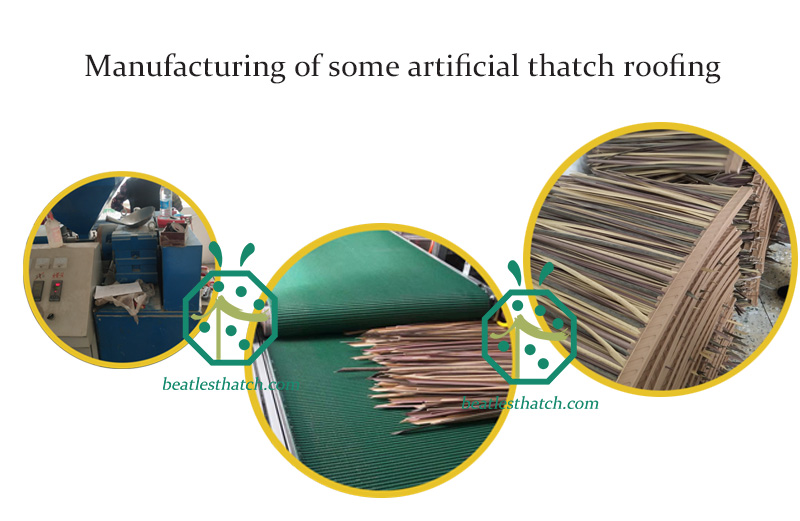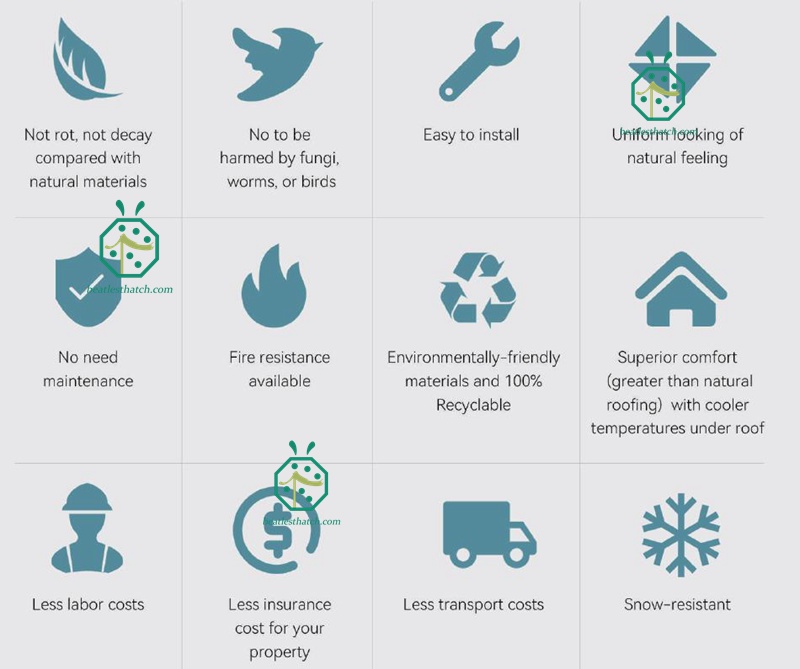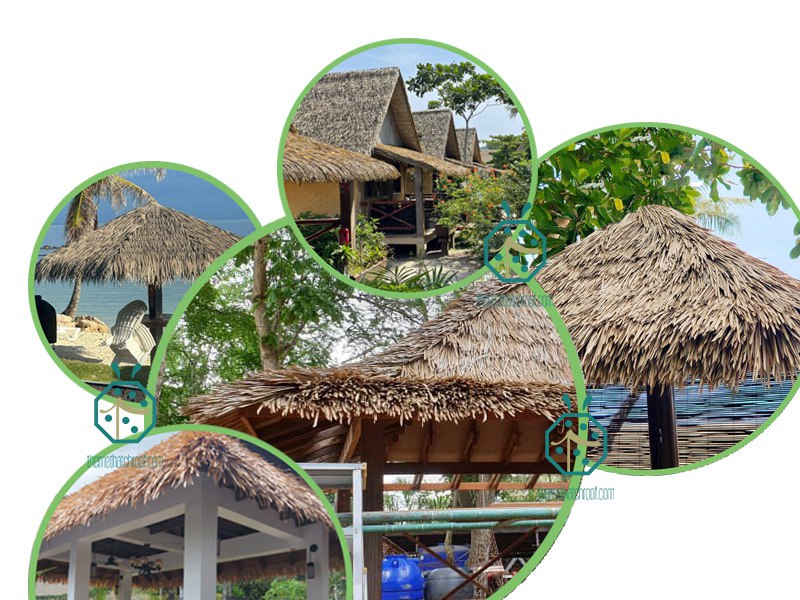A synthetic thatch roof is a roofing material designed to replicate the look and feel of natural thatch while offering enhanced durability and longevity, using various polymer compounds and additives to enhance the material's performance such as durability, fire-resistant. It is typically made from synthetic fibers such as high-density polyethylene (HDPE), nylon or PVC that are carefully engineered to mimic the texture, color, and shape of natural palm thatch roof or other grass thatch materials, such as reed thatch, straw thatch, coconut thatch roof, etc.
Manufacturing Process of Synthetic Thatch Roof:
The manufacturing process of synthetic thatch involves several steps. First, the synthetic fibers are extruded or woven into desired lengths and shapes resembling thatch strands. Next, these synthetic strands are treated with UV inhibitors and fire retardants to improve their resistance to sunlight and enhance fire safety. The strands are then bundled together and attached to a base material, which can be made of a variety of materials such as mesh, netting, or flexible panels. The base material provides structural stability and allows for easy installation.

Advantages of Synthetic Thatch Roof:
1. Durability:
Synthetic thatch is highly durable and resistant to weathering, UV rays, saltwater, and pests. It can withstand extreme weather conditions and has a longer lifespan than natural thatch, reducing the need for frequent replacements.
2. Low Maintenance:
Synthetic thatch requires minimal maintenance compared to natural thatch. It does not rot, decay, or attract mold or insects. Periodic cleaning with water is usually sufficient to keep it looking fresh and vibrant.
3. Fire Safety:
Synthetic thatch is typically treated with fire retardants, making it more fire-resistant than natural thatch. This can provide an added level of safety in areas prone to wildfires or where fire codes are stringent.
4. Aesthetics:
Synthetic thatch closely resembles natural thatch and retains the charming, authentic look of traditional thatched roofs. It can be customized to match various styles, such as tiki hut, palapa, or tropical-themed structures.

Applications of Synthetic Thatch Roof:
Synthetic thatch roofs provide a sustainable and long-lasting alternative to natural thatch. With their durability, low maintenance requirements, fire resistance, and authentic aesthetics, they are suitable for a range of applications, including tiki huts, palapas, gazebos, pergolas, and even residential homes.
1. Tiki Huts:
Tiki huts are typically small, open-sided structures often found in tropical settings. Synthetic thatch roofs add an exotic and authentic touch to these huts while providing long-lasting protection from the elements.
2. Palapas:
Palapas are larger structures with thatched roofs often seen in resorts, beach clubs, or outdoor entertainment areas. Synthetic thatch is an ideal choice for palapas as it offers superior resistance to wind, rain, and sun exposure.
3. Gazebos and Pergolas:
Synthetic thatch roofs can be used to create beautiful and inviting outdoor spaces like gazebos and pergolas. These structures can be designed to incorporate natural elements that blend harmoniously with the surroundings.
4. Residential Homes:
Synthetic thatch can also be used on residential homes to add a unique touch and create a tropical or beach-inspired ambiance. It offers the advantages of durability, low maintenance, and an extended lifespan.
